The Role of ABA Therapy in Reducing Self-Injurious Behaviors in Children with Autism
Understanding ABA Therapy’s Impact on Self-Injurious Behaviors in Autism

Setting the Stage: Autism and Self-Injurious Behaviors
Self-injurious behaviors (SIBs) in children with autism spectrum disorder (ASD) pose significant challenges for families, caregivers, and healthcare providers. These behaviors not only affect the safety and well-being of the child but also complicate efforts to enhance developmental outcomes. Among several therapeutic options, Applied Behavior Analysis (ABA) has emerged as the most effective intervention to reduce SIBs, particularly when applied early and intensively. This article explores the pivotal role of ABA therapy, its methods, evidence base, providers, and the broader context of multidisciplinary approaches to curbing self-injury in children with autism.
Defining Applied Behavior Analysis (ABA) Therapy and Its Role in Autism
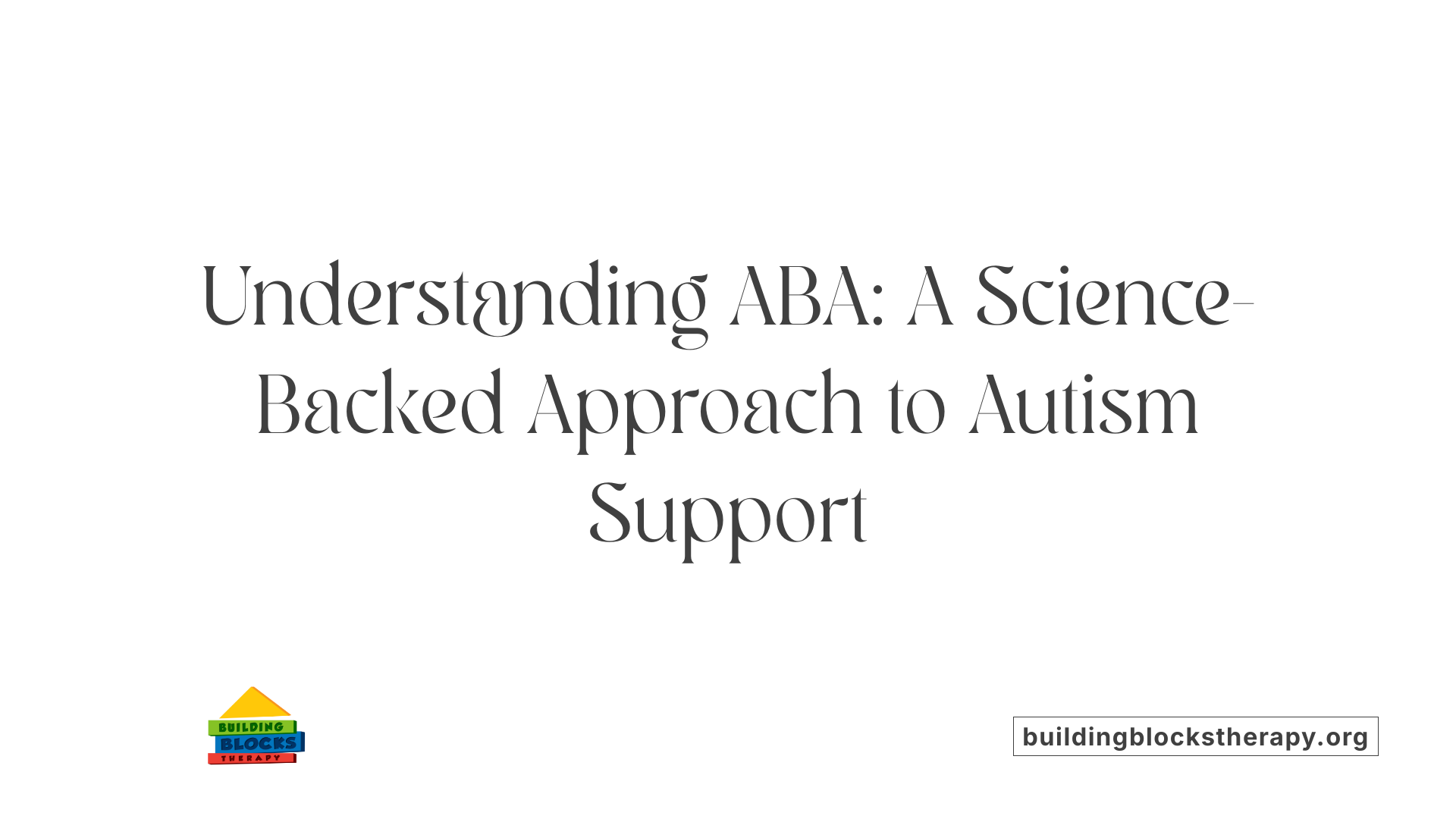
What is applied behavior analysis (ABA) therapy and how does it help individuals with autism?
Applied Behavior Analysis (ABA) therapy is a scientifically supported method aimed at helping individuals with autism develop crucial skills while reducing challenging behaviors, including self-injury. ABA works by thoroughly assessing a person's behavior and then applying evidence-based strategies such as positive reinforcement to encourage desirable behaviors.
How does ABA help individuals with autism?
ABA assists autistic children in learning communication, social interaction, and daily living skills. It uses structured, often play-based techniques that make learning engaging and enjoyable. This approach focuses on teaching new skills and reducing behaviors that may cause harm or interfere with learning, by shaping behaviors through repeated practice and reward.
What are the goals of ABA in skill development and behavior reduction?
The primary goals of ABA are to increase functional skills and decrease harmful or disruptive behaviors. Therapists design personalized programs that fit each child’s unique needs, emphasizing abilities and interests. This tailored approach supports greater independence and participation in everyday activities.
How are reinforcement techniques used in ABA?
ABA relies heavily on reinforcement, which means providing positive feedback or rewards when the child exhibits a target behavior. This encourages the child to repeat positive actions. Therapists carefully choose reinforcers that motivate each individual, helping to build lasting behavior changes.
Why is early and intensive intervention important?
Research shows that starting ABA therapy early in childhood and applying it intensively—typically around 10 to 20 hours a week—leads to the most significant improvements. Early intervention can improve communication skills, especially for children at risk of not developing verbal abilities. Long-term benefits include sustained reductions in self-injurious behaviors and better adaptive functioning.
Overall, ABA therapy is recognized as a vital tool in supporting autistic children. By focusing on personalized, positive, and systematic approaches, ABA helps children build essential skills and reduce challenging behaviors, enhancing their quality of life and independence.
Effectiveness of ABA Therapy in Reducing Self-Injurious Behaviors
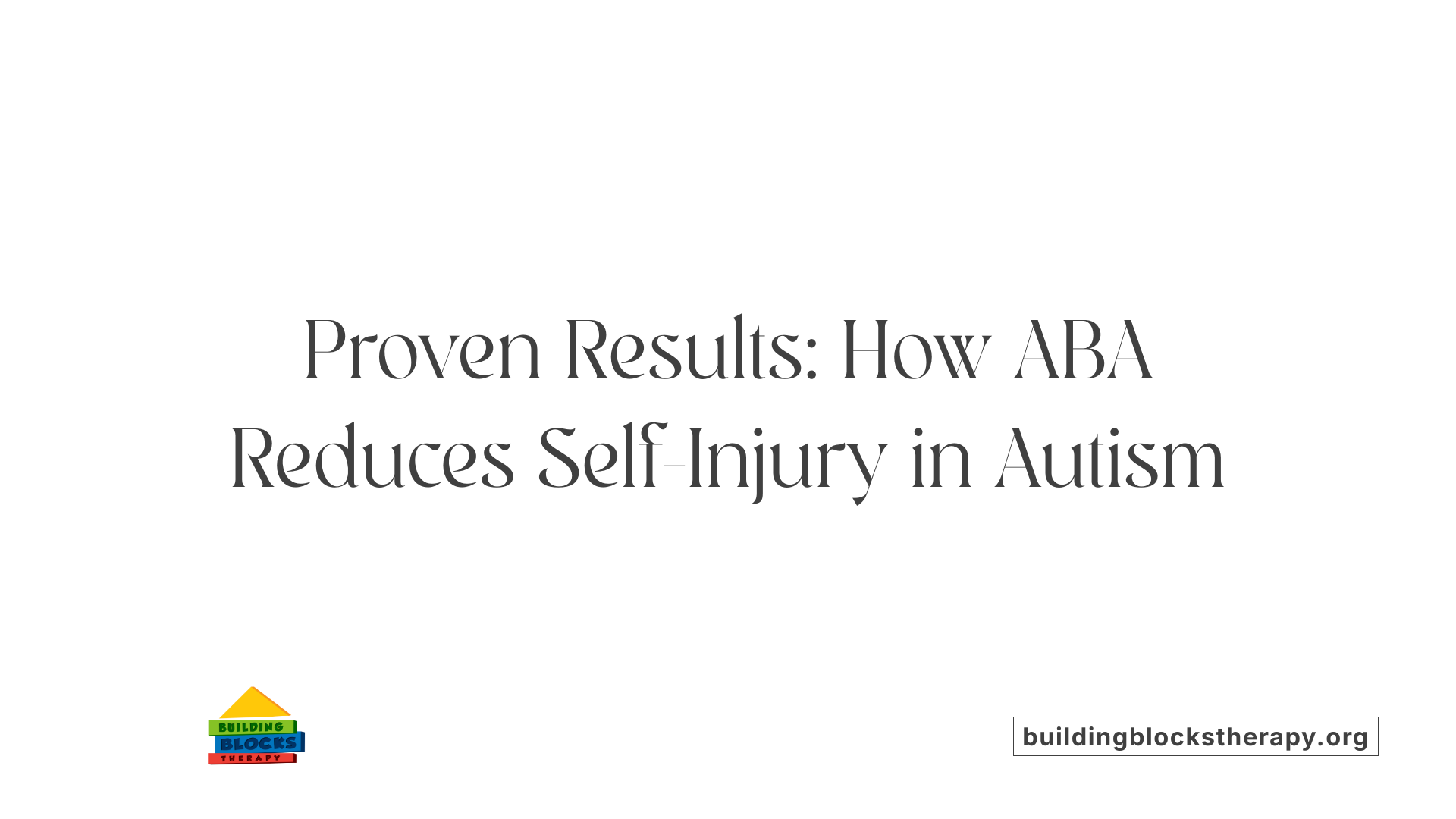
What evidence supports the effectiveness of ABA therapy for individuals with autism?
Applied Behavior Analysis (ABA) therapy is widely recognized as the most effective intervention for reducing self-injurious behaviors (SIBs) in children with autism spectrum disorder (ASD). Research consistently demonstrates that ABA can lead to significant improvements, with some studies reporting reductions in self-injury rates ranging from 40% up to over 60%. This makes ABA the standout treatment among behavioral therapies for managing SIBs.
Reported reductions in self-injury rates
Studies included in recent reviews show that ABA interventions reduce self-injurious behaviors by approximately 40% to 70%, particularly when treatment is tailored to a child's individual needs and implemented intensively. Early and systematic application of ABA is often linked to better outcomes, especially for children at risk of more severe behavioral challenges. This intensive, functional approach helps children acquire new skills and reduces harmful behaviors through structured reinforcement techniques.
Comparison with other behavioral interventions
While cognitive behavioral therapy (CBT) offers benefits for adolescents with ASD by addressing emotional regulation and anxiety, achieving reductions around 30% to 50% in SIBs, ABA generally produces larger and more consistent decreases in self-injury. Sensory integration therapy yields moderate success rates of about 30% to 40%, mainly helping children with sensory processing difficulties. Combined interventions, incorporating ABA, CBT, sensory therapies, and sometimes pharmacological treatments, show the highest reductions, often exceeding 80% in severe or complex cases.
Impact of early and systematic ABA application
Early and intensive ABA interventions maximize the potential for long-term improvements. When therapy begins promptly and follows individualized behavioral assessments, children have better chances to develop communication skills and reduce self-injurious behaviors sustainably. Modern ABA emphasizes engaging, play-based methods rather than repetitive tasks, making learning enjoyable and facilitating the transfer of skills beyond therapy sessions. This systematic approach ensures that interventions are not only effective but also supportive of the child's overall wellbeing and independence.
| Aspect | ABA Therapy | Other Interventions | Notes |
|---|---|---|---|
| Reduction in SIBs | 40% to 70%+ | CBT: 30%-50%, Sensory: 30%-40%, Combined: 80%+ | ABA shows consistently stronger effects overall |
| Age Group Focus | Children and adolescents | CBT: Adolescents mainly | ABA effective across broader age ranges |
| Approach | Intensive, individualized, reinforcement-based | Emotion regulation (CBT), Sensory processing | ABA focuses on behavior change through environmental factors |
| Long-Term Benefits | Sustained reductions when applied early | Limited data | Early ABA yields better lasting outcomes |
Common Techniques and Methods Used in ABA Therapy
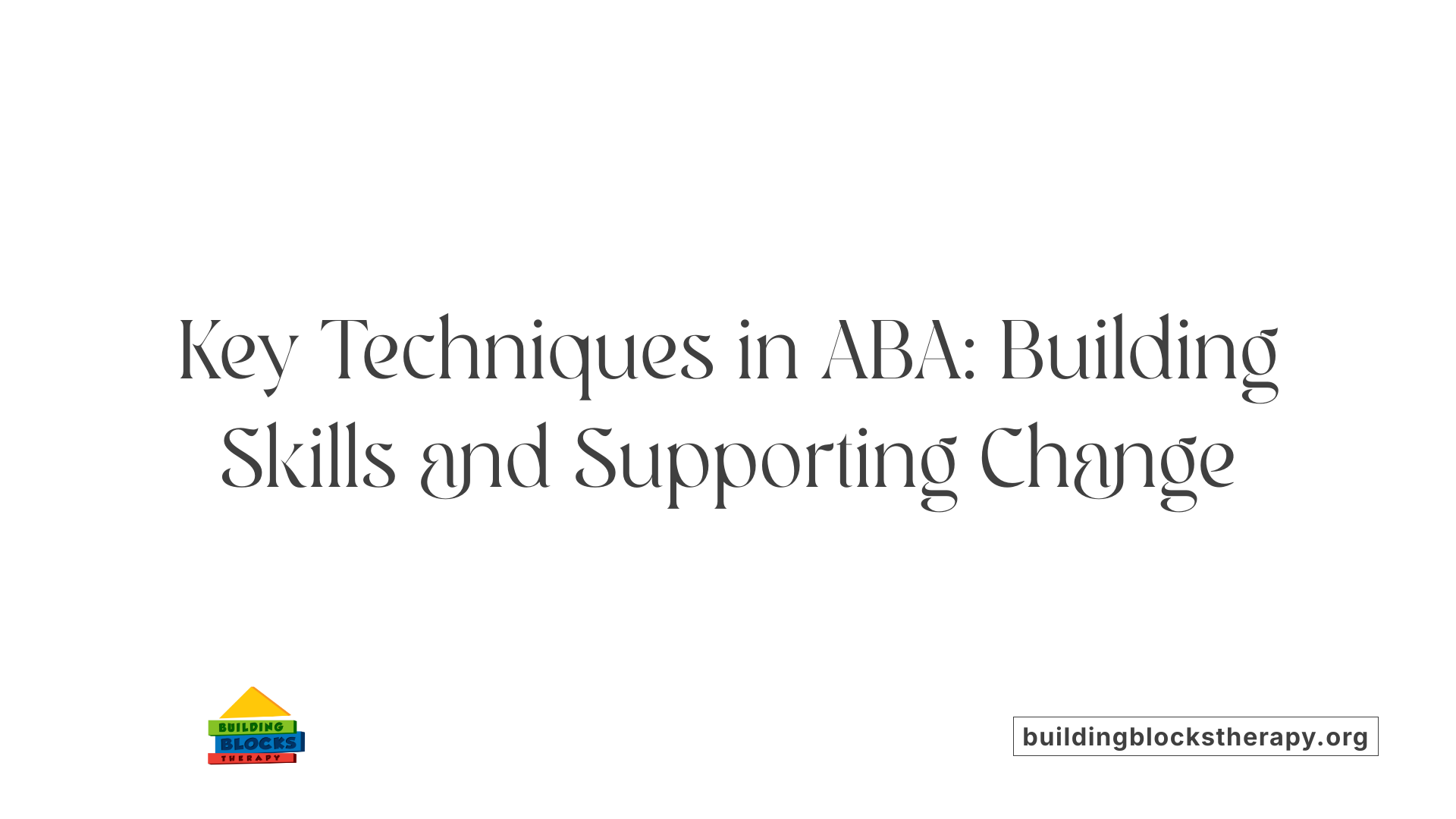
What are some common techniques used in ABA therapy?
Applied Behavior Analysis (ABA) therapy employs several structured techniques to promote skill development and reduce challenging behaviors in children with autism spectrum disorder (ASD). One widely used method is Discrete Trial Training (DTT), which involves breaking skills into small, teachable units delivered in a repetitive, highly structured format. Each trial includes a prompt, a learner response, and a clear reinforcement or correction, making learning tangible and measurable.
Contrasting with DTT, Natural Environment Training (NET) focuses on teaching skills within the child's everyday settings, such as home or playground, helping to generalize learned behaviors to real life. NET encourages spontaneous communication and learning through play, making therapy more engaging and contextually relevant.
ABA also incorporates verbal behavior interventions, which target communication by using models, prompts, and script fading. These approaches strengthen language and social interaction by teaching functional use of language rather than rote repetitions.
Complex behaviors are taught using behavior chaining, which breaks down tasks into smaller sequential steps. This is combined with prompting and fading strategies, guiding the child toward independence by gradually reducing assistance.
Central to ABA is the use of reinforcement, including positive reinforcement like praise or tangible rewards, to encourage desirable behaviors. Negative reinforcement may also be used carefully to reduce undesirable behaviors. Tools like visual supports, token systems, and behavior contracts are often integrated to enhance motivation, understanding, and consistency.
Together, these techniques form a comprehensive, individualized learning plan that seeks to increase beneficial behaviors while decreasing self-injury and other challenges through evidence-based, adaptable methods.
Who Provides ABA Therapy? Training and Professional Standards
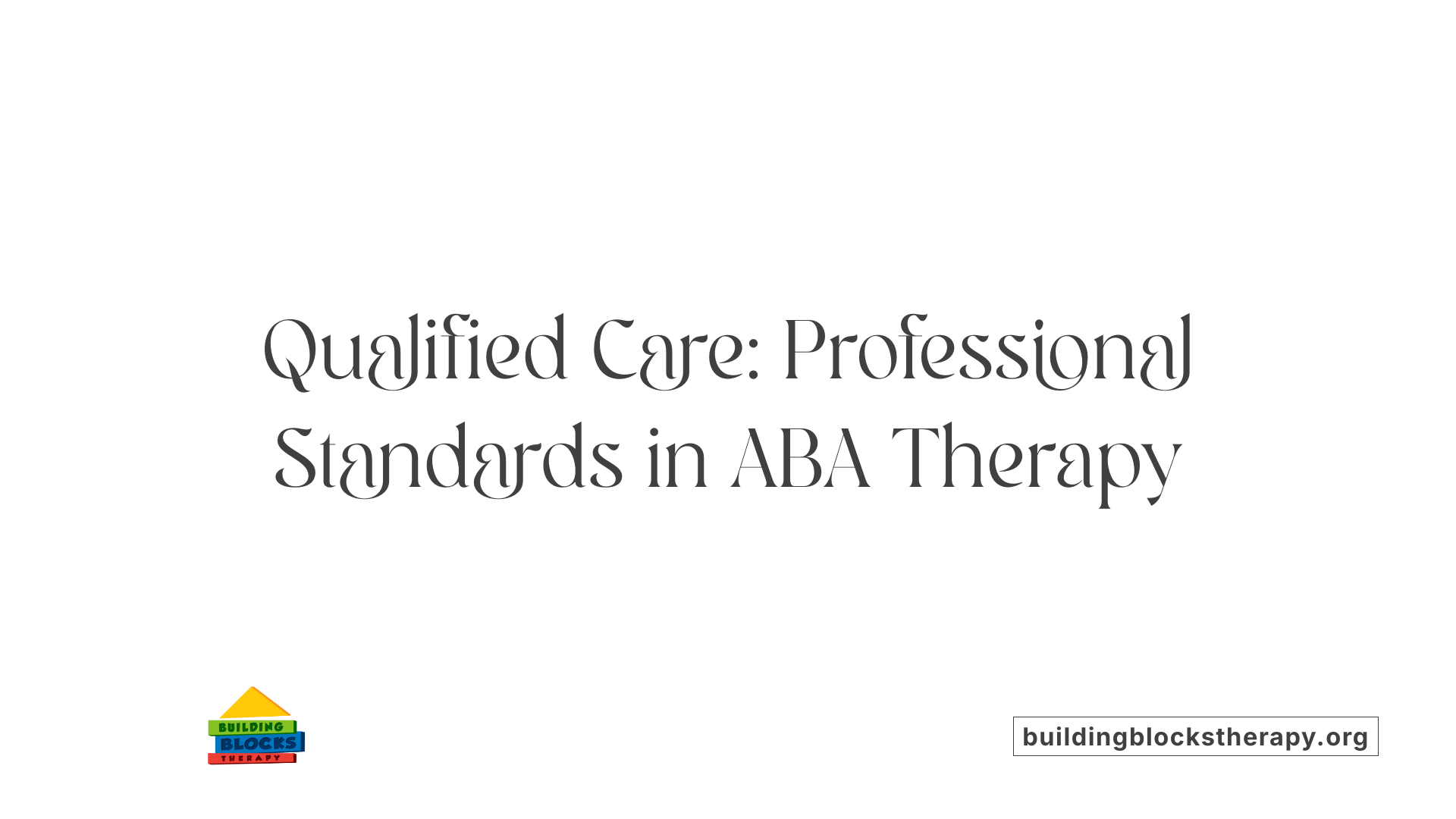
Types of ABA Providers
ABA therapy is usually delivered by a range of professionals including Board-Certified Behavior Analysts (BCBAs), licensed behavior therapists, and specialized paraprofessionals who work under the supervision of certified analysts. Each plays a distinct role in delivering interventions tailored to children with autism spectrum disorder.
Training and Certification Process
To become an ABA therapist, candidates commonly pursue a master's degree in applied behavior analysis or a related discipline. This education is followed by extensive supervised practical experience, often around 2,000 hours. After meeting these requirements, individuals must pass a comprehensive certification exam administered by the Behavior Analyst Certification Board (BACB).
Behavior Analyst Certification Board (BACB) Requirements
The BACB sets professional standards for ABA practitioners. Their certification involves validating proficiency in ABA principles, ethical practices, and applied techniques such as positive reinforcement and behavior analysis frameworks. Licensure and certification requirements vary by state, but adherence to BACB standards is widely recognized as essential for competent practice.
Ethical Guidelines and Standards
Training programs emphasize strict ethical guidelines to protect clients and promote best outcomes. ABA providers learn to apply interventions that respect individual needs and promote positive behavioral change without coercion. Ongoing supervision and continuing education are part of maintaining certification and ethical practice.
Importance of Qualified Professionals
Qualified ABA providers ensure therapies are implemented effectively and safely. Their expert training allows for customized treatment plans that consider the child’s strengths and challenges, supporting sustainable improvements in behavior and quality of life. Employing credentialed professionals is critical for families seeking effective, compassionate ABA intervention.
Introducing Skill-Based Treatment (SBT): An Evolution in ABA
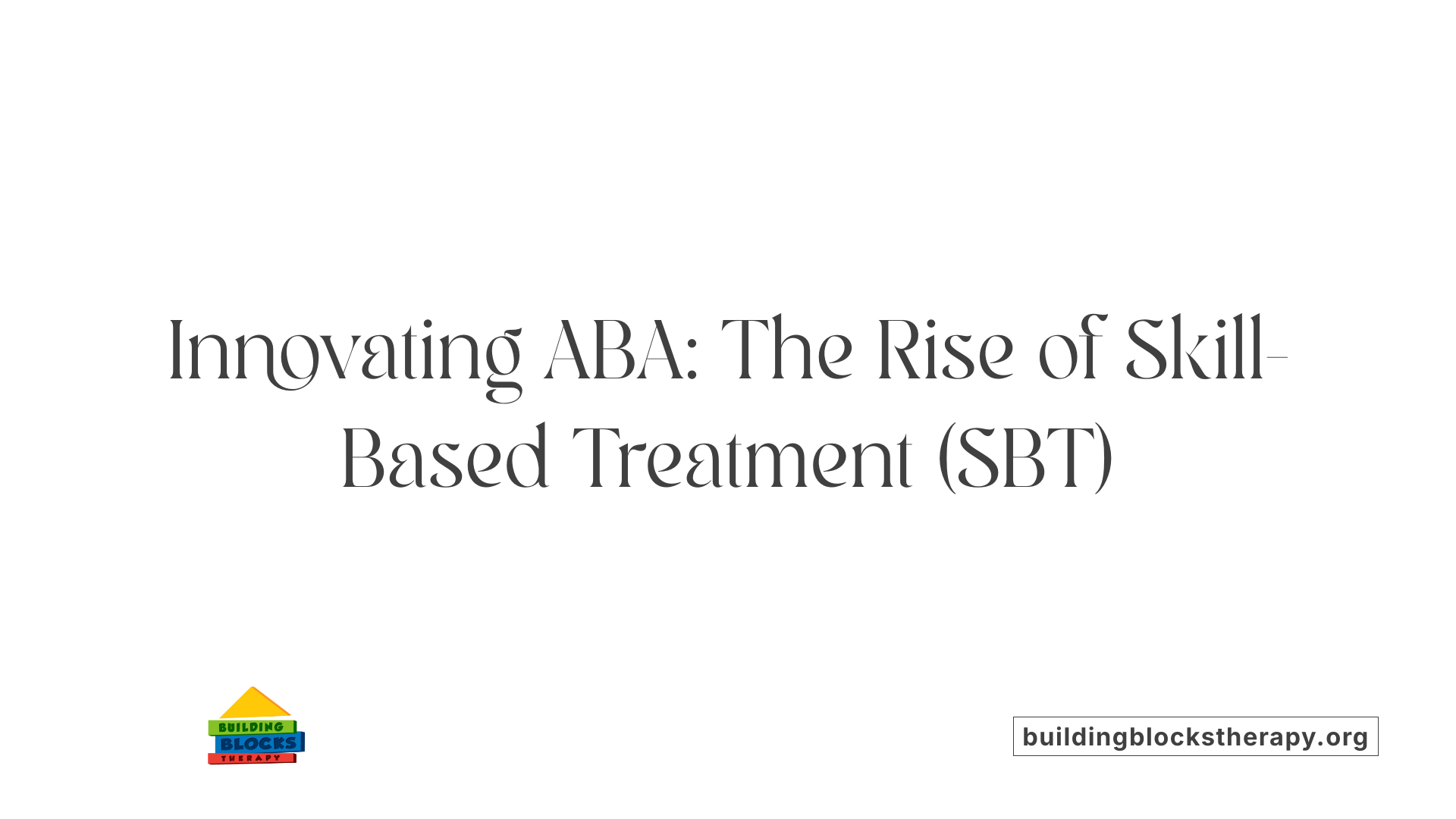
What is Skill-Based Treatment (SBT)?
Skill-Based Treatment (SBT) has emerged as a modern evolution in Applied Behavior Analysis (ABA) over the past decade. It focuses on addressing challenging behaviors in individuals with autism spectrum disorder (ASD) through a safe, efficient, and effective method. SBT builds on traditional ABA principles but integrates comprehensive assessments and trauma-informed approaches to better suit individual needs.
How does functional assessment and contingency analysis work in SBT?
SBT begins with a detailed functional assessment, which includes interviews and synthesized contingency analysis. This process helps identify the specific reasons or functions behind challenging behaviors. Understanding these functions allows therapists to tailor interventions precisely, improving the chances of successful behavior change.
What is the teaching functional communication response (FCR) component?
A key feature of SBT is teaching a functional communication response (FCR). This means helping individuals learn effective ways to communicate their needs and desires, which directly addresses multiple challenging behavior functions simultaneously. This approach not only reduces unwanted behaviors but also promotes generalization and sustainability of positive skills.
How does SBT address safety, trust-building, and trauma-informed practices?
SBT emphasizes creating a trusting and safe environment for the individual. Therapists monitor the participant’s emotional state, ensuring they are "happy, relaxed, and engaged" before and during treatment. This trauma-informed approach prioritizes the individual's well-being and comfort, supporting more positive therapy experiences and outcomes.
What does research say about SBT effectiveness?
Research studies, including randomized controlled trials and multiple single-case experimental designs, report an average 98.2% reduction in challenging behaviors following SBT interventions. SBT's adaptability is reflected in its application across different settings such as home, school, and telehealth platforms. Ongoing research aims to further validate its long-term effectiveness and safety compared to traditional ABA methods.
Multidisciplinary and Combined Approaches to Reducing Self-Injury
How does the integration of ABA with CBT, sensory integration, and pharmacology improve outcomes?
Research shows that combining Applied Behavior Analysis (ABA) with Cognitive Behavioral Therapy (CBT), sensory integration therapy, and pharmacological treatments significantly elevates the effectiveness of interventions targeting self-injurious behaviors (SIBs) in autistic children and adolescents. While ABA alone can reduce behaviors by 40% to over 60%, combined interventions have reported reductions exceeding 80%, especially in severe cases or when comorbid conditions are present.
Why are family training and involvement important?
Family involvement plays a crucial role in the success of interventions. Training families equips them to support and reinforce behavior strategies consistently across settings, which helps generalize gains beyond therapy sessions. Multidisciplinary teams often engage caregivers to ensure treatment is tailored, sustainable, and sensitive to the child’s daily environment.
How do these approaches address comorbidities and severe cases?
Children with ASD who experience severe self-injury or multiple co-occurring conditions benefit from a combined treatment approach. Integrating different therapies allows practitioners to tackle various aspects of behavior and underlying issues, such as anxiety or sensory sensitivities. Pharmacological support, when appropriate, can address biological factors, while behavioral and sensory therapies manage functional and emotional components.
What is the benefit of individualized assessment?
Individualized assessment is fundamental in crafting effective combined treatment plans. It helps identify specific behavioral triggers, functions, and needs of each child. This ensures interventions like ABA, CBT, and sensory integration are precisely adapted, maximizing treatment impact and promoting lasting behavior change.
In sum, a multidisciplinary, family-inclusive approach that blends behavioral, cognitive, sensory, and medical therapies provides the most promising outcomes in reducing self-injury among autistic youth. Personalization and collaboration enable these interventions to be more effective, especially for complex and severe presentations.
Long-Term Outcomes and Sustainability of ABA Interventions
What are the limitations of long-term follow-up data?
Although many studies highlight the effectiveness of Applied Behavior Analysis (ABA) in reducing self-injurious behaviors (SIBs) in children with autism spectrum disorder (ASD), comprehensive long-term follow-up data remain limited. This scarcity restricts our full understanding of how well improvements persist years after the intervention concludes.
What evidence supports sustained improvements with ABA?
Existing evidence suggests that early and intensive ABA interventions can lead to lasting reductions in SIBs. Children who receive therapy early often show maintained behavioral improvements over time. These sustained effects are attributed to the development of functional skills that generalize beyond therapy sessions.
Why is early and intensive intervention important?
Intervening early and providing ABA treatment intensively—often 10-20 hours weekly—appear crucial for maximizing positive outcomes. Early support helps at-risk children improve communication and reduce harmful behaviors before patterns become entrenched.
What are the challenges in generalizing treatment effects over time?
One major challenge lies in the generalization of learned skills and behavior changes to diverse environments and routines. While therapists strive to make learning engaging and naturalistic, transferring gains outside clinical settings is complex and may require ongoing support.
Overall, sustaining ABA's benefits hinges on early start, consistent intensity, tailored strategies, and family involvement to reinforce progress beyond formal therapy.
Modern Trends in ABA: Play-Based and Naturalistic Methods
Shift from rigid, repetitive tasks to engaging methods
Recent developments in Applied Behavior Analysis (ABA) have moved away from previously rigid and repetitive techniques toward more engaging and naturalistic approaches. These modern methods emphasize making therapy sessions enjoyable and motivating for autistic children, fostering a positive learning environment.
Use of play-based ABA to facilitate learning
Play-based ABA has become a central strategy within these modern trends. By incorporating play into therapy, children are encouraged to learn new skills in contexts that feel natural and stimulating. This approach helps reduce resistance to therapy and increases participation by aligning with children's interests and preferred activities.
Promoting generalization of skills beyond therapy
A significant benefit of play-based and naturalistic ABA is the promotion of generalization—where skills learned in therapy sessions transfer to real-life settings such as home, school, and social environments. Therapists design interventions to be flexible and child-centered, which aids in applying behavioral gains outside the clinical setting.
Focus on supporting strengths and interests
Rather than forcing conformity to neurotypical standards, contemporary ABA practices prioritize recognizing and supporting individual strengths and interests. This shift helps autistic children build independence and experience greater joy and choice in daily life. Therapists tailor interventions to the unique profile of each child, ensuring that learning respects their emotional needs and promotes self-advocacy.
Overall, the trend towards play-based and naturalistic ABA reflects a supportive, engaging, and individualized approach that enhances effectiveness and well-being in children with autism spectrum disorder.
Criticisms and Challenges in ABA Therapy
What challenges or criticisms exist regarding ABA therapy?
Applied Behavior Analysis (ABA) therapy, while widely recognized as effective, faces several significant criticisms and challenges.
One common concern is that ABA can be overly repetitive and demanding. Some critics argue that especially traditional ABA programs focus heavily on repetitive tasks, which might not engage the child’s interests and can lead to resistance or burnout.
A central debate surrounds whether ABA pressures autistic children to conform to neurotypical behavior standards. Critics contend this approach may overlook the acceptance of neurodiversity and suppress natural behaviors, such as stimming, which are important for self-regulation.
There are also worries about the potential emotional impact of ABA, particularly when aversive or punishment-based methods were historically used. Such techniques may cause trauma or emotional distress, although modern ABA generally rejects these practices in favor of positive reinforcement.
Access to ABA therapy is another challenge, as socioeconomic factors and limited provider availability can create barriers for many families, leading to disparities in who receives timely and consistent treatment.
In response, modern ABA has evolved to include more play-based, naturalistic, and individualized approaches. Therapists aim to build on the child’s strengths and interests, making learning fun and facilitating skills generalization, while respecting the child’s emotional well-being and autonomy.
Despite these advances, debates about ethical application, cultural sensitivity, and balancing behavior change with neurodiversity acceptance remain active within the autism community and among professionals.
The Role of Family and Caregiver Involvement in Successful Outcomes
Importance of family training and support
Engaging family members in training is crucial for the success of interventions targeting self-injurious behaviors in children with ASD. Families learn to implement strategies at home, which helps maintain consistency outside therapy sessions.
Multidisciplinary collaboration
Effective treatment involves coordinated efforts among therapists, medical professionals, educators, and families. This collaborative approach ensures that interventions address the child's comprehensive needs, including behavioral, emotional, and sensory aspects.
Empowering caregivers to reinforce techniques
Caregivers trained in behavioral methods such as ABA can reinforce positive behaviors and replace self-injury with functional communication throughout daily activities. Their involvement increases intervention intensity and effectiveness without requiring continuous professional presence.
Enhancing generalization of skills
Family and caregiver participation promotes the transfer of acquired skills from structured therapy settings to natural environments. This generalization is vital for sustainable behavioral improvements and for the child's independence.
Building a supportive environment
A supportive and understanding home environment enhances motivation and emotional well-being, which are fundamental for progress. Family involvement also helps to identify triggers and preventive strategies to reduce self-injurious behaviors.
Together, these family-centered practices form a foundation that maximizes treatment gains, supports individualized care, and enhances the child's quality of life.
Addressing Sensory Issues and Emotional Regulation Alongside ABA
What Role Does Sensory Integration Therapy Play in Managing Self-Injurious Behaviors?
Sensory integration therapy targets children with autism spectrum disorder (ASD) who experience sensory overload or hypersensitivity. This approach works by helping these children better process sensory input, which often contributes to self-injurious behaviors (SIBs). Studies have shown that sensory integration therapy can reduce such behaviors by approximately 30% to 40%. While its success is described as moderate, it remains an important option, especially for children whose SIBs are closely tied to sensory challenges.
How Effective Is Cognitive Behavioral Therapy (CBT) for Adolescents with ASD?
Cognitive Behavioral Therapy proves particularly beneficial for adolescents with autism, especially those considered higher-functioning. CBT primarily addresses emotional regulation and anxiety, which often underlie self-injurious behaviors. Research indicates that CBT achieves reductions in SIBs ranging from about 30% to 50%. Its focus on helping adolescents manage emotions and anxiety complements other behavioral interventions, making it a valuable part of a comprehensive treatment plan.
Why Is Targeting Emotional Regulation and Anxiety Important?
Emotional regulation and anxiety are significant contributors to self-injurious behaviors among adolescents with ASD. Addressing these issues through therapies like CBT helps reduce internal stressors that provoke harmful behaviors. This focus promotes not only behavioral improvements but also emotional well-being and adaptive coping skills, enhancing overall quality of life.
How Does Combining ABA With Other Therapies Enhance Outcomes?
Applied Behavior Analysis (ABA) is widely recognized as the most effective intervention for SIBs, but combining ABA with sensory integration therapy, CBT, and even pharmacological treatments often results in even greater improvements. Combined approaches have been linked to reductions in self-injury exceeding 80%, particularly in severe cases or those with additional medical or psychological conditions. This synergy allows treatment to address multiple underlying factors simultaneously, facilitating more comprehensive behavior change.
What Does a Holistic Treatment Model Look Like?
Successful interventions emphasize a multidisciplinary and individualized approach. Therapists work closely with families, tailoring treatments to each child's unique needs and involving family training. This holistic model incorporates ABA’s reinforcement-based learning, sensory therapies addressing sensory processing issues, and CBT for emotional regulation. Such integration not only reduces challenging behaviors but also supports emotional health and the child’s ability to thrive across settings.
Versatility of ABA Delivery: Settings and Accessibility
In which settings is ABA therapy commonly delivered?
ABA therapy is delivered flexibly across multiple environments to best serve the child's needs. Common settings include the child's home, school, and increasingly via telehealth platforms. This adaptability allows therapy to be integrated naturally into daily routines and educational activities, enhancing skill generalization.
What is the typical intensity and duration of ABA sessions?
Although early intensive ABA programs recommended very high weekly hours, modern practice often involves about 10–20 hours per week. Sessions maintain a balance between intensity and practicality, aiming to engage the child without causing undue fatigue or stress.
How is ABA adapted to individual needs and contexts?
ABA interventions are tailored to each child's unique profile, interests, and challenges. Therapists often employ play-based and naturalistic methods rather than rigid exercises to make learning enjoyable and effective. This personalization supports stronger engagement and better outcomes.
What challenges exist regarding accessibility and scalability of ABA?
Despite its demonstrated effectiveness, ABA accessibility faces challenges such as limited availability of trained therapists, cost considerations, and geographic barriers. Telehealth delivery is a promising adaptation that enhances reach, but further work is needed to scale services equitably across diverse communities.
Looking Ahead: The Future of ABA in Managing Self-Injury in Autism
Applied Behavior Analysis remains a cornerstone in the treatment of self-injurious behaviors among children with autism, backed by robust evidence and evolving practices that address earlier criticisms. Modern ABA emphasizes individualized, play-based, and trauma-informed approaches delivered by highly trained professionals and supported by families within multidisciplinary frameworks. Combined interventions further enhance outcomes, offering hope for sustained behavioral improvements and better quality of life. Continued research, increased access, and ethical practice advancement will be vital to maximizing ABA’s positive impact, ensuring children with autism gain skills and independence while minimizing harmful behaviors for years to come.
References
- Effective Interventions in the Treatment of Self-Harming ...
- Effective Interventions in the Treatment of Self-Harming ...
- The Controversy Around ABA
- Skill-based treatment for challenging behavior in autism ...
- Applied Behavior Analysis (ABA)
- Your Complete Guide to Becoming an ABA Therapist
- The Controversy Around ABA
- Is ABA therapy harmful? The controversy explained
- Barriers to Receiving Applied Behavior Analysis Services ...
- Applied Behavior Analysis (ABA)






